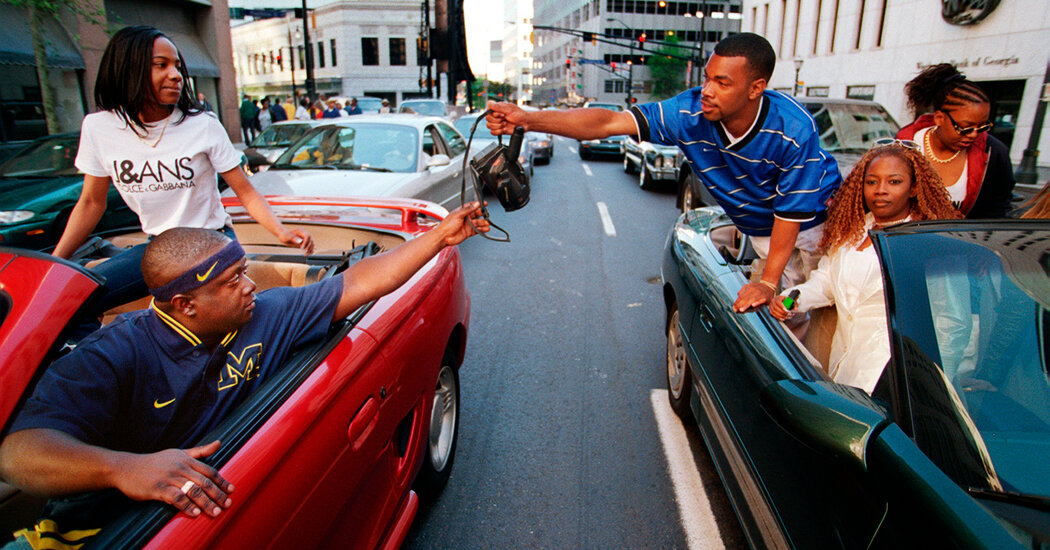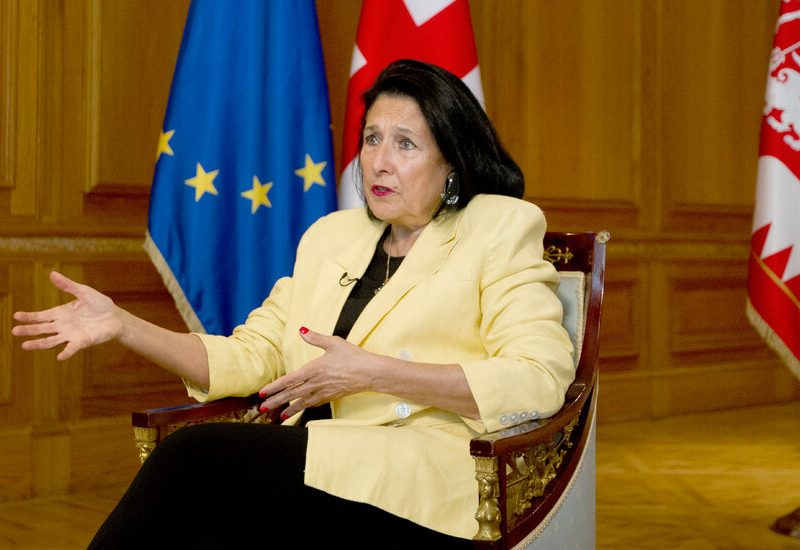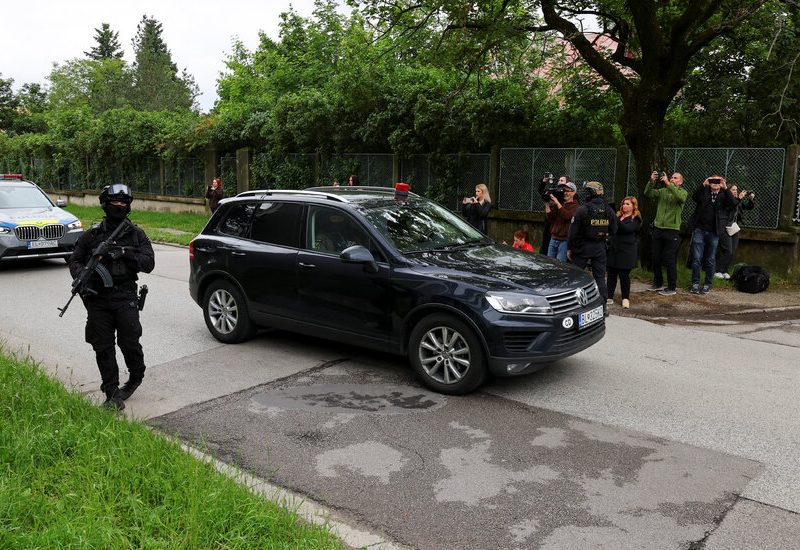Back then, hundreds of thousands of young people, mostly Black college students, descended on Atlanta every spring for the rowdy and raunchy event called Freaknik. Performers like Notorious B.I.G., OutKast and Uncle Luke put on shows all over the city. The traffic hardly budged, and why should it? The party was right there in the street.
Three decades went by. Partyers became professionals. Children were born. Wardrobes evolved. All the while, some who had been in the middle of it all were perfectly content knowing their youthful exploits that might be a bit embarrassing today were tucked away. They had their memories. Photographs were stowed in shoe boxes. As for whatever was captured on tape, who has a VCR anymore?
But a new documentary risks shaking things up.
“Freaknik: The Wildest Party Never Told” promises to be more than a racy exposé, exploring the transformation over the 1980s and 90s of a modest spring break cookout for students at the city’s historically Black colleges into a sprawling spectacle that consumed Atlanta.
Even so, for months, the conversation surrounding the documentary, which was released on Thursday on Hulu, has included curiosity and concern of attendees now in their 40s and 50s, wondering whether they might show up in it.
The worrying led to threats of legal action. One attendee pre-emptively requested divine intervention. “I’m praying that Jesus just be a big, tall privacy fence,” she wrote on the social media platform X.
In a nod to the unease, producers have said that releases were signed by those who shared their footage, and faces were blurred to shield identities in scenes that were more explicit.
In any case, much of the talk has been good-natured and fun, with a sense that whatever shows up in the film is more likely to provoke a cringe than a scandal. Nevertheless, it has suddenly shoved members of the camcorder generation into a TikTok-era predicament.
“You’re not thinking, ‘Twenty, 30 years from now, someone is going to see me,’” said Ronda Racha Penrice, a cultural historian and writer who took part in Freaknik twice in the 1990s.
That said, she and others contend that any discomfort is worth it if it means exploring the complexities of a gathering often remembered in Atlanta for the disruption it caused and its ignominious demise. City officials cracked down on Freaknik, and effectively killed it, ahead of the 1996 Olympics. (Smaller variations using the Freaknik name have continued.) In the mid-1990s, there were allegations of sexual assault, public intoxication and looting during the days-long event.
“To some it was a headache, and I get it,” said DJ Mars, who performed at Freaknik as a student at Clark Atlanta University before launching a career that included tours with Usher and other major artists. “As an adult, I see what the problem was.”
But for young people immersed in it, the vibe was electric. Freaknik — a mash-up of “freak” and “picnic” — has been described as a Black alternative to both Woodstock and the spring break madness that took over Florida beaches.
“It was like a takeover, an epic takeover,” said Lori Hall, the co-founder of a marketing agency, who lived in Atlanta and started taking part in Freaknik festivities as a teenager. “We were living life and we felt like we had the power, the power to just be, and that was a very cool thing for the culture.”
The event, especially at its height, introduced the promise of Atlanta to a new generation. Many who came for a weekend ended up returning for good, including Tyler Perry, the media mogul, who built one of the country’s largest film studios on 330 acres in the city.
“While all the kids were getting numbed out, drinking and partying, I was waking up to possibility,” Mr. Perry, who grew up in New Orleans, wrote in his book “Higher Is Waiting.” “I saw there were Black people doing great things with their lives. There were Black doctors, lawyers, business owners,” he added. “I knew Atlanta was the place for me.”
For many, Freaknik represented something bigger than a festival: It was an annual transfusion of music, fashion and culture.
“It was not the era of cellphones,” said Ms. Penrice, who attended Freaknik for the first time in 1994 while studying at Columbia University in New York. “There wasn’t the internet. It was really word of mouth. It’s hard to explain how everyone knew, but everyone knew.”
The filmmakers have collected footage from those who held onto their camcorder tapes, using it to capture the energy pulsing through the event and the city. The documentary, which premiered at South by Southwest this month, has high-profile backers. Jermaine Dupri, the rapper and producer, is an executive producer, as is the rapper 21 Savage and Uncle Luke.
In a recent appearance on Tamron Hall’s daytime talk show, the host put the question directly to Uncle Luke: “Should people be afraid of this documentary on Freaknik?”
“Yes,” he said, erupting into laughter.
His response likely did little to quiet the discourse that popped up as soon as the film was announced and has dragged on for months on social media, podcasts, YouTube videos and blogs.
“‘Freaknik aunties’ are shook,” reported Revolt, an outlet covering hip-hop culture. On butter.atl, a popular Instagram account in the city, the comment threads on posts about the film included those who had similar concerns or others who were eager to watch closely to see if they could spot people they knew.
“Me zooming in tryna find my husband in his heyday,” one person wrote.
“Puttin the Mamas and grandmas business in the streets,” wrote another.
And perhaps, most important: “Who handed over the footage tho.”
Whether it was the filmmakers’ intention or not, the consternation has made for a “dream marketing maneuver,” said Miles Marshall Lewis, a pop culture critic and author.
“Everyone who experienced Freaknik in real time will watch at least once,” he added, “in order to mark themselves safe from incriminating film footage.”
Mr. Lewis took part for the first time in 1989, as an 18-year-old student at Morris Brown College, one of the historically Black institutions in the city, along with Spelman, Morehouse and Clark Atlanta.
“Everyone of a certain age attended at least once or knew someone who went,” he said, “and came away with scandalous stories of what went down.”
DJ Mars was not all that interested in seeing which of those stories made it into the documentary. He wanted to hear the music. He wanted to see the fashion: the “Homey the Clown” bootleg T-shirts, the Nike Cortez sneakers, the African American College Alliance sweatshirts, the tennis skirts that were not complete without a pager clipped on.
“It’s a throwback to my youth, essentially,” he said.



